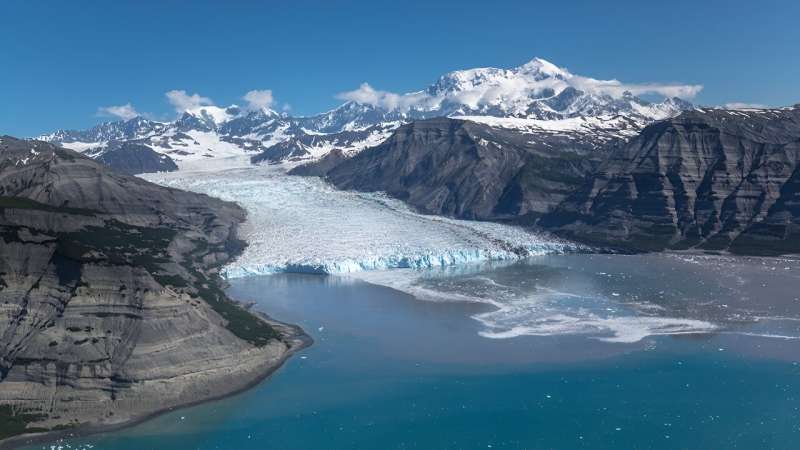This article has been reviewed according to Science X's editorial process and policies. Editors have highlighted the following attributes while ensuring the content's credibility:
fact-checked
peer-reviewed publication
proofread
A million years without a megaslide: Study goes deep into the Gulf of Alaska to investigate why

Earthquakes, volcanic activity, and sediment flux can trigger underwater landslides known as submarine slides, which can translate to tsunamis on the surface. Megaslides are extreme versions of these underwater events.
The sixth-largest recorded megaslide occurred in the Surveyor Fan in the Gulf of Alaska around 1.2 million years ago. It was at least 16,124 square kilometers in area, and the preserved volume today is 9,080 cubic kilometers. At the time, before some portions of the slide were subducted or accreted, the volume was at least 16,280 cubic kilometers.
A new study published in Geophysical Research Letters by Sean Gulick and colleagues examines this significant slide. Using images from seismic reflection surveys and ground truth data from drilling efforts in the Gulf of Alaska, researchers uncovered the existence of the slide, as well as the seafloor topography from before and after it occurred.
Between 0.6 and 1.2 million years ago, the glacial-interglacial cycle began growing longer, a change known as the Mid-Pleistocene Transition (MPT). The researchers suggest that sediment buildup and flux at the start of the MPT due to great ice extents caused slope instability, meaning when a large earthquake struck the region, it likely triggered the megaslide. They also noted an absence of megaslides of the same magnitude after this event.
Although seismic activity continues in the region, the slides that do occur are smaller for several reasons. One is a change in the balance between sediment flux (which can cause slope instability) and seismic strengthening, in which shaking causes sediment to compact, ultimately improving slope stability.
In addition, ice streams crossing the continental shelf spread sediment deposits over large areas on the continental slope, leading to less cohesive slides. The continued buildup of sediment along the Alaska margin also reduced the critical wedge taper, which lowers the likelihood the slope will fail.
More information: Sean P. S. Gulick et al, Effect of Seismicity and Tectonic‐Glacial Interactions on Submarine Megaslides, Geophysical Research Letters (2024). DOI: 10.1029/2024GL108374
Journal information: Geophysical Research Letters
Provided by American Geophysical Union
This story is republished courtesy of Eos, hosted by the American Geophysical Union. Read the original story here.





















